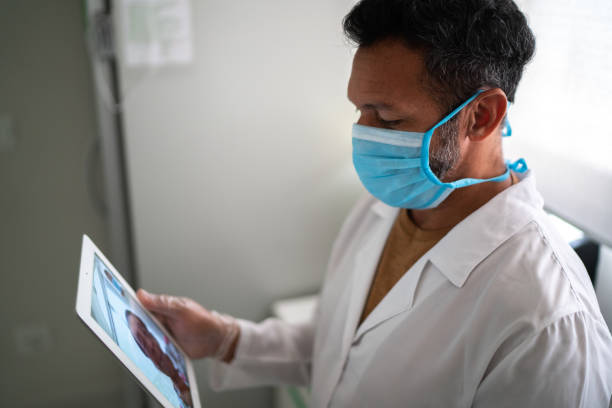Patient Monitoring: Facilitating Remote Healthcare Delivery
In today's dynamic healthcare landscape, the fusion of technology and medicine has ushered in a new era of patient care. Amidst this digital transformation, telemedicine has emerged as a cornerstone of remote healthcare delivery, offering unprecedented accessibility and convenience to patients worldwide. At the heart of this evolution lies patient monitoring solutions, which play a pivotal role in facilitating comprehensive care beyond the confines of traditional medical settings. Let's delve into the symbiotic relationship between telemedicine and patient monitoring, unraveling the myriad ways in which they are revolutionizing healthcare delivery.

Bridging the Distance Divide: The Role of Telemedicine
Telemedicine, characterized by the use of telecommunications technology to deliver healthcare services remotely, has bridged geographical barriers and transformed the way patients access medical care. From virtual consultations and remote diagnosis to telemonitoring and teletherapy, telemedicine encompasses a broad spectrum of services that enable patients to receive timely, personalized care from the comfort of their homes. This paradigm shift in healthcare delivery has been particularly transformative in underserved and rural communities, where access to specialized medical expertise is limited.
Empowering Patients through Continuous Monitoring
At the core of effective telemedicine lies the concept of continuous patient monitoring, which forms the foundation of proactive healthcare management. Patient monitoring solutions encompass a diverse array of technologies, including wearable devices, remote monitoring platforms, and mobile health applications, all aimed at gathering real-time data on patients' vital signs, symptoms, and overall health status. By enabling continuous monitoring, these solutions empower patients to actively engage in their own care, facilitating early detection of health issues and timely intervention to prevent complications.
Enhancing Care Coordination and Collaboration
In the realm of telemedicine, seamless communication and collaboration among healthcare providers are essential for delivering comprehensive, coordinated care. Patient monitoring solutions play a pivotal role in facilitating this collaboration by providing a centralized platform for data sharing and communication between various members of the healthcare team. From primary care physicians and specialists to nurses and caregivers, these solutions ensure that pertinent patient information is readily accessible, enabling informed decision-making and streamlined care coordination.
Optimizing Resource Allocation and Healthcare Efficiency
The integration of patient monitoring solutions into telemedicine not only enhances patient care but also optimizes resource allocation and healthcare efficiency. By enabling remote monitoring and virtual consultations, these solutions alleviate the burden on healthcare facilities, reducing overcrowding in clinics and hospitals. Moreover, they empower healthcare providers to prioritize high-risk patients, allocate resources more effectively, and deliver targeted interventions based on real-time data, ultimately improving patient outcomes and reducing healthcare costs.
Overcoming Challenges and Ensuring Accessibility
While the benefits of telemedicine and patient monitoring solutions are undeniable, challenges such as digital divide and technological barriers must be addressed to ensure equitable access to remote healthcare services. Efforts to bridge the digital gap through initiatives such as telehealth literacy programs and subsidized access to technology are crucial in ensuring that underserved populations can reap the benefits of telemedicine. Additionally, ongoing innovation and refinement of patient monitoring technologies are essential to enhance usability, interoperability, and scalability, thereby expanding access to remote healthcare for all.
Conclusion
In conclusion, the integration of patient monitoring solutions into telemedicine represents a paradigm shift in the way healthcare is delivered and experienced. By harnessing the power of technology to enable continuous monitoring, enhance care coordination, and optimize resource allocation, telemedicine is revolutionizing the healthcare landscape, making quality care more accessible and convenient than ever before. As we continue to embrace these innovations and overcome challenges, the future of remote healthcare delivery holds immense promise for improving patient outcomes, enhancing provider efficiency, and transforming the way we approach healthcare delivery.



Comments
Post a Comment